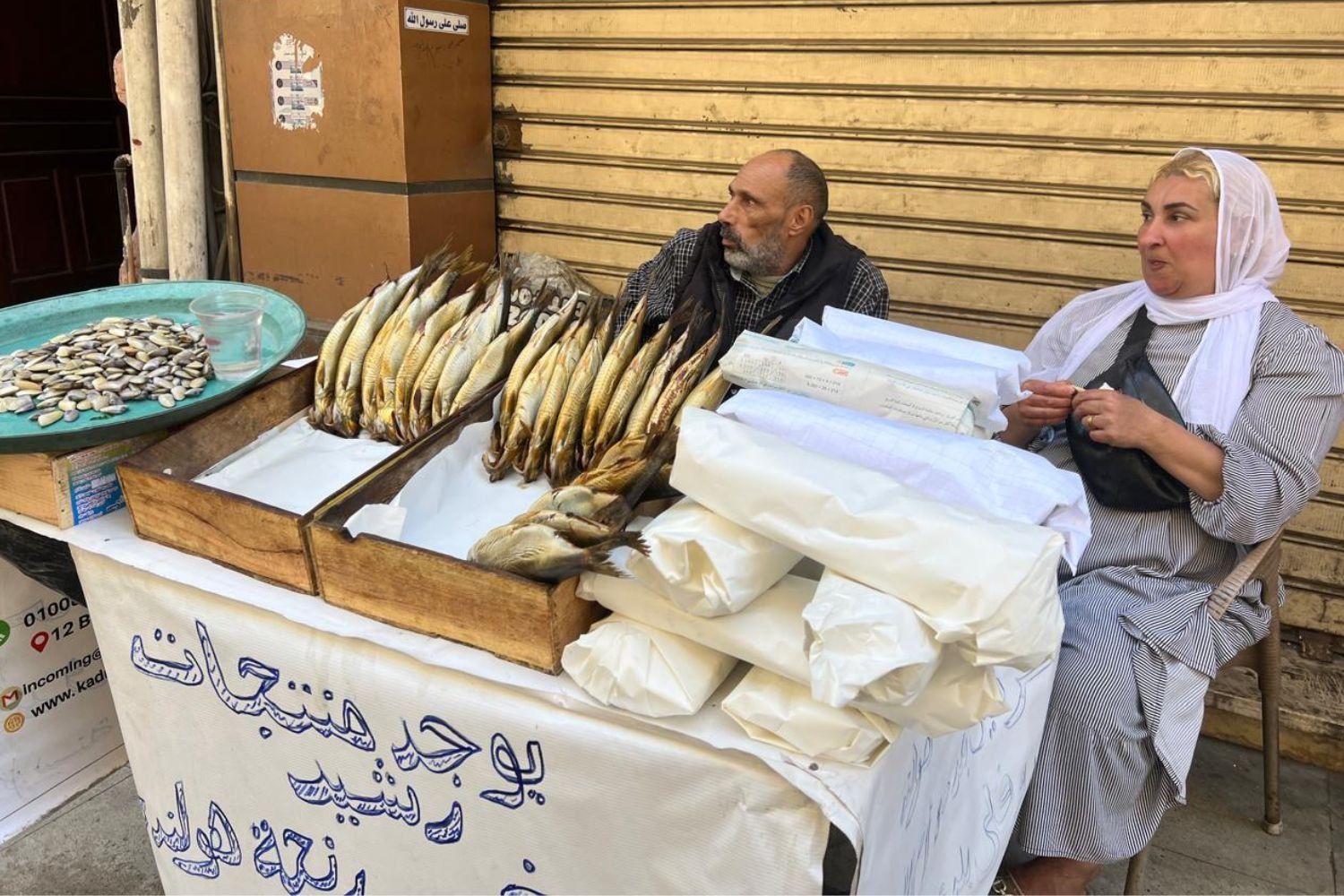Sham El-Nessim: Egypt’s Ancient Spring Festival
The celebration, which dates back to 2700 BC, carries a stench of tradition and communal celebration.
Ever since the age of the pharaohs, the beginning of spring has smelled like fermented fish in Egypt. Annually around Easter, the nauseating odor of feseekh wafts through the streets of cities like Alexandria and Cairo, as well as rural villages, announcing the arrival of the ancient Egyptian spring festival Sham El-Nessim. Ironically, Sham El-Nessim translates to “smelling the breeze.”
Egypt is home to a blend of ancient, Coptic, and Islamic cultures that overlap and intertwine into a unique language and wealth of local traditions. Sham El-Nessim, which has been celebrated since 2700 BC when it was called Shamoush (revival of life), is one of the country’s most important national holidays. The pharaohs believed that the beginning of time and creation of the world started from that day.
During this time of the year, an entire street in downtown Alexandria turns into a large fish market for feseekh: fermented, pickled and salted grey mullet or bori fish. Handlers arrive in the city from the countryside where they prepare the dish for the holiday’s increased demand. The most delicious and trusted fish is said to come from Rashid, a port city in the Nile Delta approximately 65km (about 40 miles) northeast of Alexandria. It became internationally known after the Rosetta stone was found there in 1799, opening the gateway to deciphering ancient Egypt.
The tradition of salted fish dates back to the pharaohs and Egyptians consider it a gift they inherited from their ancestors.
The tradition of salted fish dates back to the pharaohs and Egyptians consider it a gift they inherited from their ancestors.
“The process is very simple,“ Samah Saeed tells OkayAfrica without going into any detail. Alongside her brother Salah Abdelaziz, Saeed has been selling feseekh and the herring-like ringa her whole life. “We do it all by hand,” she says, then gets interrupted by a car stopping. As Saeed tends to the customer, her nephew Mohamed Salah picks up the conversation on her behalf.
“We take a holiday during Ramadan and in the last week, we start selling,” Salah explains. The family business was passed down to them from their grandparents who, like them, were from Rashid. According to Saeed, the tradition comes from the ancient Egyptians.
In the times of the pharaohs, the receding Nile River left behind trails of fish each spring. Egyptians would dry the fish in the sun before placing it in large wooden vats filled with the right ratio of salty water for 45 days. When it is done correctly, the fish’s inside becomes gooey and stinky. It is raw, but the salt prevents it from rotting.
While Saeed and Salah make it seem like preparing feseekh is an easy matter, the fermented fish has long sparked debates and controversy. Every year, the Ministry of Health issues a warning for people to stay away from feseekh which, in rare cases, can lead to botulism poisoning and even death. However, this does not deter Egyptians who enjoy it with brown baladi bread, a little oil, lemon and onion. At Cairo’s famous Shaheen for Salted Fish and Caviar, the warning is even considered positive advertising.
“Feseekh and ringa come from the times of the pharaohs,” says Ibrahim, an elderly man selling feseekh, ringa and um kholoul (mussels) from a little wooden box on the street. Watching over his wares in a traditional beige jalabiya and white taqiyah prayer cap, Ibrahim tells OkayAfrica that he has been selling his fish for the past 60 years.
Like Saeed, he hails from Rashid where he learned the practice of fermenting and pickling fish from his grandparents. Every morning, Ibrahim and his relative Abdelrahman travel with their wares between Alexandria and Rashid on a microbus. “Rashid is famous for its ringa,” he says.
Photo by Dr. Amira Abou-Taleb
The people of Rashid are proudly known for making the best ringa and salted fish.
Apart from feseekh, ringa, and meluha fish, Sham El-Nessim picnics, traditionally held in fields, parks, the zoo or by the Nile River, include falafel, fūl medammes (a stew of cooked fava beans), lettuce, spring onion and colored, hard-boiled eggs, another tradition that has been carried on from the ancient Egyptians.
According to Egyptian scholar Hebatalla Omar, colored eggs can be found on ancient papyri, symbolizing the creation of life. “[Ancient Egyptians] wrote their prayers and wishes for the New Year on eggs and placed them in baskets of palm fronds that they hung on balconies or tree branches to enjoy the blessings of God's light at sunrise; they believed that this would fulfill their wishes,” she writes.
The beginning of spring, the theme of resurrection, and colored eggs align Sham El-Nessim celebrations with Easter traditions. As nature grows into full bloom, the festival always falls on Coptic Easter Monday, though it is not related to any Abrahamic religion. Observed by most Egyptians, it is a beautiful manifestation of how the past lives on in present practices. Many Egyptian Coptic and Islamic traditions trace their origin to antiquity, acknowledging that old rituals and beliefs did not vanish, but were rather integrated into evolving life.
Despite deepening divisions, Egypt’s ancient traditions preserve a sense of unity and cultural belonging for all citizens. Spring is a time for hope and Sham El-Nessim the symbolic beginning of a kind, new year.
Additional reporting by Dr. Amira Abou-Taleb.
- How Marvel's 'Moon Knight' Handled Egyptian Representation ›
- Could Egypt Become Africa’s First Summer Olympics Host? ›
- Here’s Why Egyptians Celebrate Christmas on January 7 ›
- How 'Flight Into Egypt' Connects Black Artists with Ancient Egyptian Heritage ›
